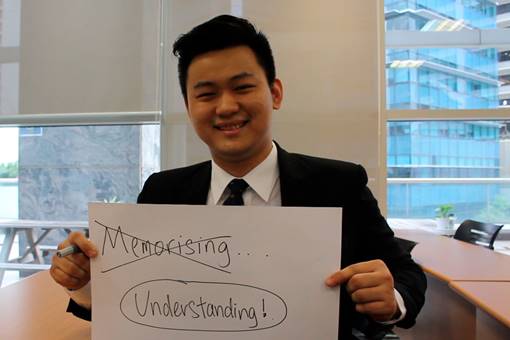Helping Asian Students Break Out of Their Shells
- 7th July 2017
- Motivation and Inspiration

Asian students are often cited as passive learners. Dr. John Teo, Deputy Director of Studies at London School of Business & Finance (LSBF) in Singapore, sits down with Julailah Wahid to talk about how schools can inspire these students to play a more active role in their learning.

Various academics have concluded that Asian students tend to be passive learners. Asian students generally participate less in class discussions and engage in more rote learning as compared to their Western counterparts. In a bid to support these students, Dr. Teo believes that it is necessary for schools to implement classroom strategies to promote more active learning. To this end, it is important to provide a greater insight into the learning styles of students. “By doing so, we would then be able to bridge the gap in students’ learning,” he said.
Characteristics of Asian learning styles
Culture has a significant impact on the learning styles of students. In Dr. Teo’s journal article Understanding Asian Students Learning Styles, Cultural Influence and Learning Strategies, he highlighted the key differences of students across various regions.
The first group, which comprised students from Singapore, Hong Kong, China, South Korea, Malaysia, Indonesia and Vietnam, was found to be collectivist in nature. The group was teacher-centred, with much respect given to hierarchy and status. The group was also more likely to maintain harmony and ask minimal questions in class. Additionally, students avoid confrontation, treat their teachers as experts, and “only speak when called upon by the teachers”.
This is in stark contrast to the students from Australia, the UK, and the US. Western students were found to be individualists who play an active and independent role in their learning. They also respond more openly and partake in group discussions. Furthermore, “disagreement and confrontation with teachers are accepted” and “is in fact a part of an engaging learning environment”.
In our interview with Dr. Teo, he then suggested that “to bridge learning gaps and encourage active, deep and independent learning, blending both Asian and Western educational systems may yield a win-win situation”.
“Schools need to shift away from strictly ‘delivery mode’ lectures. To produce graduates who are capable of higher-order thinking, we should promote independent learning, active participation, and critical thinking in the classroom,” he added.
Implementing novel learning strategies
A student-centred approach, where students become active learners and teachers act as facilitators, is the way to go in the modern classroom, according to Dr. Teo.
He shared several strategies that schools can adopt to enable student-centred learning. He highlighted jigsaw learning, whereby students assume the role of subject experts and exchange their knowledge and ideas with their peers.
He also noted other strategies, such as short quizzes, review questions, think-pair-share, peer review, and flipped classroom. “These strategies are currently being implemented at LSBF in Singapore. In many ways, the school has always been at the forefront of student-centred learning,” he said.
For instance, LSBF in Singapore has been practising the flipped classroom since 2015. The flipped classroom is a blended learning approach which shifts lectures online, so that discussions and assignments can be done in the classroom.
“In doing so, more time can be devoted to critical analysis and thinking during classroom hours,” he said.
Dr. Teo also asserted that interaction amongst peer learners and the application of active learning should form the cornerstone of 21st century education.
“Ultimately, we want to motivate and engage our students. At LSBF in Singapore, we are very focussed on providing our students with a positive learning experience. By recognising the learning styles of different groups of students, we can then fine-tune our teaching methods and adopt a range of active learning strategies to address their needs.”
Suggested Programmes
Recommended Blogs for You
What is the best time for studying—day or night?
Whether you are currently pursuing a course or have recently graduated, having good study habits can always help you make…
Top tips from a first-placing champ
Want to know the secret to becoming an ACCA Prize Winner? Soh Sheng Long, an ACCA Prize Winner who placed…
Career Switch at 40 – “It’s Hectic but It’s All Worth It”
Hospitality student and mother of three Ambreen Umar Qureshi demonstrates perfectly that it’s never too late to pursue your true…
Request More Information
Contact a programme advisor by calling
+65 6580 7700


